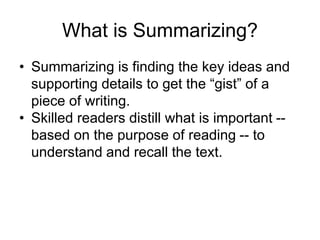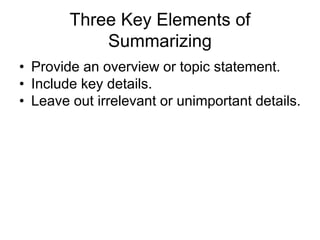This document provides an introduction to summarizing texts. It defines summarizing as finding the key ideas and supporting details of a text to understand the overall meaning. Summarizing is important because it helps students process information, see how ideas connect, and present their own ideas to others. The document recommends explaining summarizing to students, providing strategies and models, and giving opportunities for practice summarizing different types of texts with increasing complexity.

















